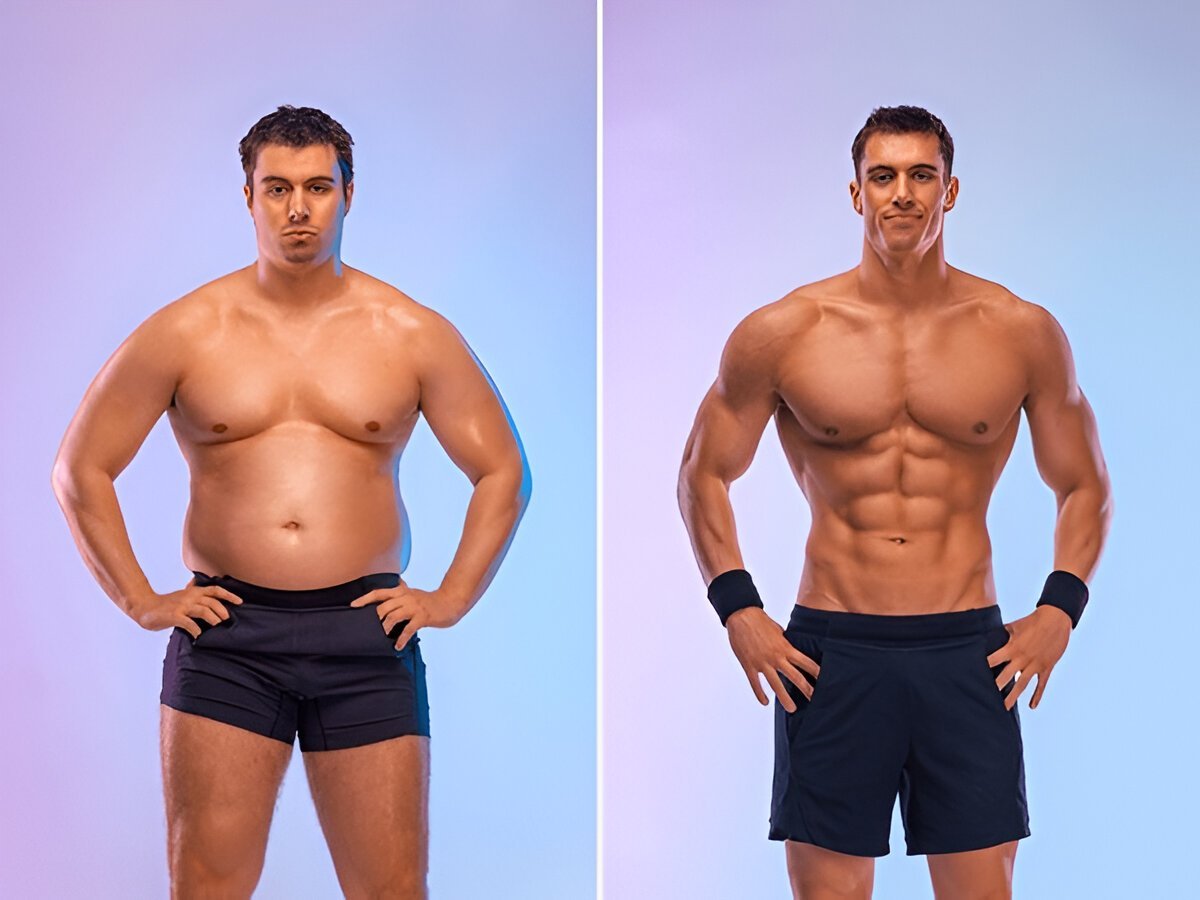Looking for the quickest means to slash your waistline? So if you fully intend to lose fat, your goal should be to follow a solid, structured plan that involves proper nutrition, smart workouts and healthy habits in the long term. So find out how to lose excess fat, whether it’s for appearance or for health, with this advanced guide that will cover all common reasons for losing fat and you’ll knows how to burn fat more effectively than ever.
The Science behind Fat Loss– How Does it Work?
Before we get into the strategies, we must first understand the mechanism behind fat loss. Your body uses fat as an energy reserve. To lose body fat, you should be in a caloric deficit—that is, you need to eat fewer calories than you burn. But how you do this deficit matters. Severe restrictive dieting or over exercising with cardio can compromise muscle, slow down metabolism and result in rebound weight gain. The goal should be to lose fat and retain muscle.
Fat Loss Diet Strategies For Fat Loss
Engage in a Well-Planned Caloric Deficit
- Sustainable fat loss is best achieved through a caloric deficit of 300-500 calories per day. This permits sustainable progress without extreme metabolic adaptations.
- Make sure you have a calorie counting tool so that you get the active amount of food.
- Not all bodies respond the same way, so adjust your intake based on progress.
- This is terrible news since we don’t want a huge deficit which slows metabolism and mus le loss.
Can I Say This? Focus on Protein
It is vital for muscle preservation in a caloric deficit. It also helps keep you satiated longer, which lessens cravings and over-snacking.
- Opt for 1.2–2.2 grams of protein per kg of BW.
- Add lean protein sources like chickens breast, fish, eggs, tofu, and Greek yogurt.
- Distribute dietary protein intake throughout the day in balance between meals to maximize rates of muscle protein synthesis.
- Tweak Carbs And Fat
- Though carbs and fats tend to be villainized, both are key to crushing performance and fat loss.
- Carbs: Select slow-digesting, high-fiber carbs such as veggies, oats, and quinoa.
- Healthy fats: Include avocados, nuts, seeds, and olive oil to promote hormonal balance.
- Weight loss: Decrease caloric intake on rest days to assist with fat loss.
Focus on Nutrient Density
- Eating a diet high in whole, nutrient-dense foods encourages fat loss and sustains energy levels.
- Avoid refined sugar to keep insulin spikes low and minimize fat storage.
- Eat more fiber-rich foods, like vegetables, legumes and whole grains.
- Drink plenty of water, making sure you are drinking at least 2-3 liters of water daily, this can help assist with metabolism and digestion.
The Most Effective Workouts For Fat Loss
The Accelerating Effect Of Strength Training On Fat Loss
The reason why strength training is vital when eating at a caloric deficit is because muscle mass can be lost while in a caloric deficit. With more muscle, your resting metabolic rate is higher, thus fat loss becomes more efficient.
- Below is an example of a Strength Training Plan
- Train at least three to five times per week.
- Concentrate on compound movements such as squats, deadlifts, bench presses and pull-ups.
- Gradually increase the weights, reps, or intensity of exercise in order to strengthen your muscles through progressive overload.
- For variety, add resistance bands, dumbbells, or body weight exercises.
- HIIT (High-Intensity Interval Training): A Fast Way to Burn Fat
- HIIT calorie burn (during and after exercise with the afterburn effect, EPOC). These are short workouts that pack a powerful punch.
Sample HIIT Workout:
- 30 seconds all out, 30 seconds on the stationary bike (repeat 10 rounds).
- 40 second burpees, 20 second rest (5 rounds).
- 20 seconds of jump squats, 40 seconds of rest (×8 rounds).
Steady-State Cardio: An Accessory Workout
HIIT is better for fat loss, however, you can add steady-state cardio too such as walking, cycling, or swimming to burn extra calories without overly stressing the body.
Best Practices for Cardio:
- Active recovery on rest days, through low-intensity steady-state (LISS).
- 2-3 days per week, 30–45 minutes of moderate-intensity cardio.
- Use cardio smart—not your primary fat-loss weapon.
- Simple Lifestyle Tips to Encourage Fat Loss
- Prioritize Sleep and Recovery
- Poor sleep can interfere with hormone levels and create cravings and fat storage.
- Get 7 to 9 hours of quality sleep per night.
Improve sleep hygiene by minimizing screen time (for everyone in the household) and ensuring the sleeping setting is dark and cool.
Keep your stress levels in check (high cortisol levels will cause you to store fat).
Go for 2to 8 hour meals and everything in between
If it fits your lifestyle, intermittent fasting (IF) can be an effective tool for fat loss. You can naturally eat fewer calories as well as more closely align meal timing and insulin sensitivity by lengthening the fasting periods.
- The common fasting protocols are: 16:8 (16 hours fast, 8 hours eating) or 18:6.
- “Make sure you have enough protein during your feeding window to keep your muscle,” he said.
- Avoid a feast immediately post-fast — good, but also stick with nutrient dense meals.
Monitor Progress and Tweak As Necessary
- Tracking is important because you will not lose fat in a straight line.
- The Scale can be your enemy, use measurements and progress photos, instead.
- Be flexible with plans according to progress (or lack thereof)
- Keep going — the results are worth the wait.
- What Not to Do for Fat Loss
- Relying Too Much on Cardio
High amounts of cardio without any strength training could result in muscle loss and a slower metabolism. Focus on strength training for best results.
Extreme Dieting
While crash diets can lead to fast Weight Loss, they also marks loss of muscle mass, mal-nutrition and rebound weight gain.
Ignoring Recovery
Too much exercise and not enough recovery can raise cortisol levels and slow fat loss. Crossover days and active rest.
Neglecting Protein Intake
Losing muscle and feeling hungry more often is what happens from a low protein diet. Ensure that protein is a regular feature in every meal.
The Fastest Way to Lose Fat & Maintain It
You can use the right combinations of diet, workout, and lifestyle changes to lose fat fast. Therefore, remember including a moderate calorie deficit, resistance training (weights), HIIT, and good nutrition with a sensible method will create fat loss for you which you can maintain. And above all, remember that the goal is consistency—long-term habit creation, not short-term solutions.
Adopting these advanced fat loss methods will help you shed fat effectively while enhancing your overall health and performance. Remember to stay focused, and ahead your progress, and love the ride towards a leaner, stronger bod!













Leave a Reply